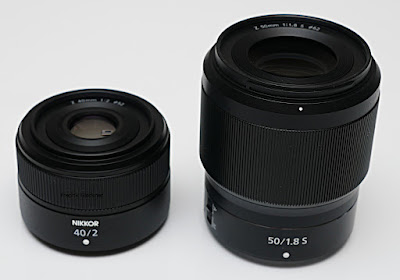Comparison of Angelbird SE and SanDisk Extreme Pro for Nikon Z9
CFExpress type B memory cards have become the new standard for high end consumer cameras. Compared with previous standards like SD and CompactFlash, these are way faster. But this speed comes at a cost: Much higher price. To get a card with a reasonable size, you must often expect to pay at least USD100, and often double that.
In a way, this is not something new. Also with SD cards, you typically paid mostly for the speed: Higher speed rating would come at a very high premium price. But the main difference is that all CFExpress type B cards are super fast, so there are no inexpesive choices.
With that in mind, I was happy to come across the Angelbird 512 GB AV Pro SE card. At less than USD200, it seems like too good to be true for a 512 GB card. As I wasn't planning on using the high end video features of the Nikon Z9, I took the chance.
While not advertising this specifically on the card, the max write speed is described as 850 MB/s, which is quite a lot lower than the typical 1200-1500 MB/s. Here the card is seen with a SanDisk 128 GB Extreme Pro, which is rated higher for write, 1200 MB/s:
To compare how they perform with the Nikon Z9, I set up the camera to 20 FPS, and to make the task of saving images as tough as possible, I used uncompressed RAW files, as well as JPEG. This means that each image typically takes up about 75 MB of space each. To see the results, I set up the camera to blank the screen with each picture, and also to play a loud shutter sound. Normally, I would keep these features disabled. Here are the results:
You'll see that while the camera buffer is being filled up, both cards perform the same. This goes on for about two seconds, where the camera takes 20 pictures per second. After this, the Angelbird does 10 FPS, while the SanDisk only gets 6 FPS. Wait, the Angelbird card was supposed to be the slower of the two? How does this make sense?
As it is in many other areas -- you may have heard that your mileage may vary -- the specifications are not always relevant for the actual performance. There are many different ways of measuring the write speed, for example, over how long time should the writing speed be sustained? So a real life test is best.
The positive outcome here is that the cheaper card, the Angelbird 512 GB AV Pro SE, comes out best, and also has way more space.
How about if you actually need to use 20 FPS for more than two seconds? My advice is to change to a different RAW file setting. Using the compressed RAW, and skipping JPEG, you can run at 20 FPS pretty much indefinately using the Angelbird card. I tried to hold down the shutter release for an extended period, and it would run at 20 FPS for the whole duration.
The compressed RAW is one of the big advantages of the Nikon Z9, in my opinion. This gives you 14 bits RAWs at suprisingly small file sizes, and you avoid clogging up your hard drives.
You may be wondering: But how is it for video use? The answer is simple: I could record 8k 60p with Nikon Z9 until the card filled up completely. This took 19:19 minutes, and the file came out at 489 723 MB. This corresponds to 423 MB/s for the whole duration of the recording. So I think it is fair to say that the card does what it should for video use too.
And if you use a different camera than the Nikon Z9, you don't need to worry about the speed rating. Lower end cameras cannot push data as fast anyway, so you can go with a slower and less expensive card. Again, the Angelbird card is a good choice, with the large size and reasonable price.




Comments
Post a Comment